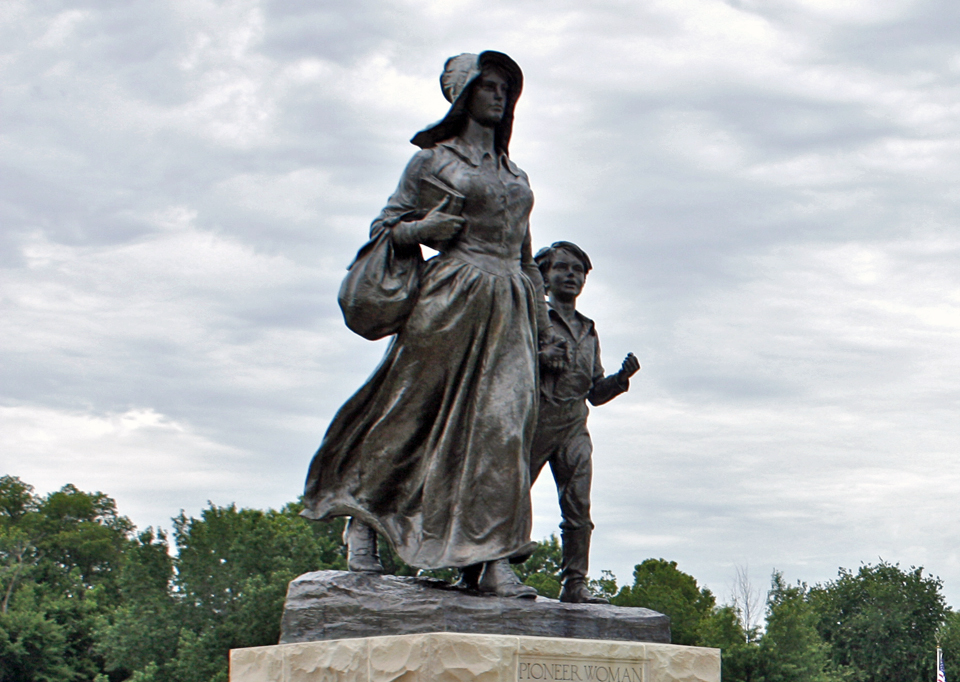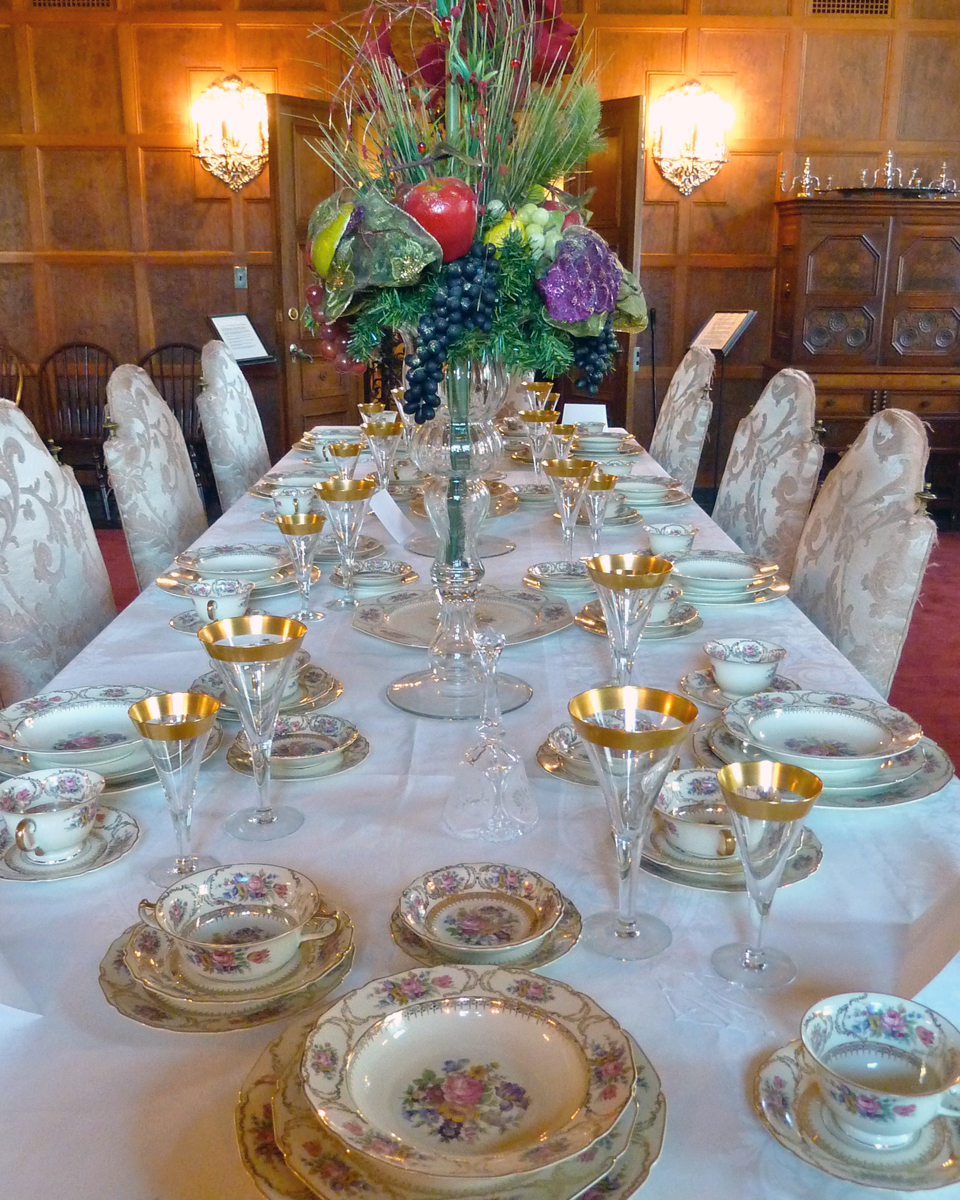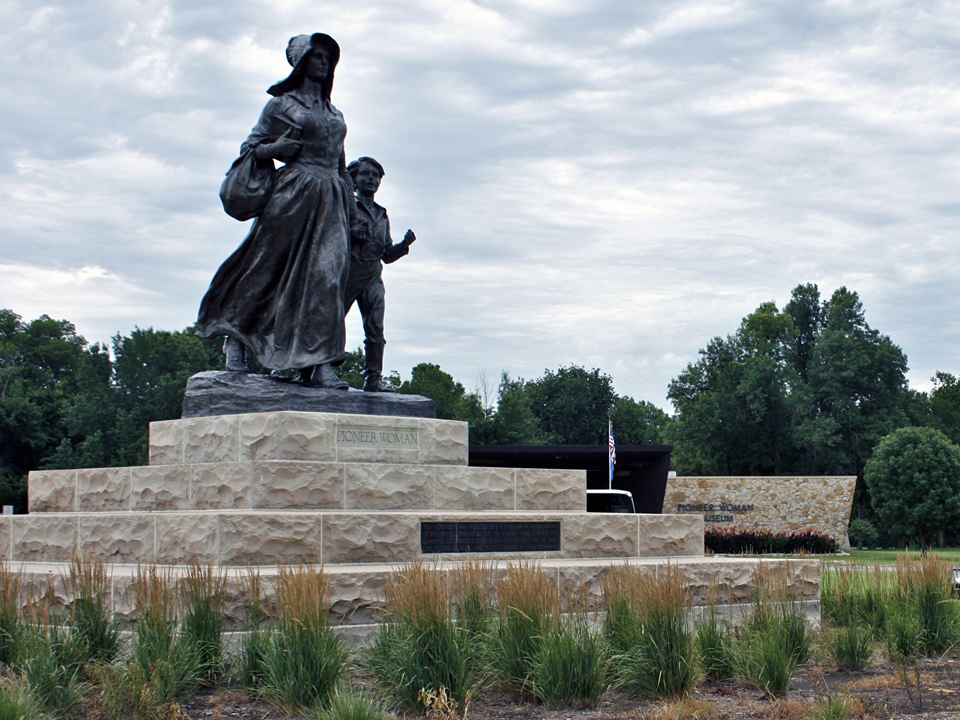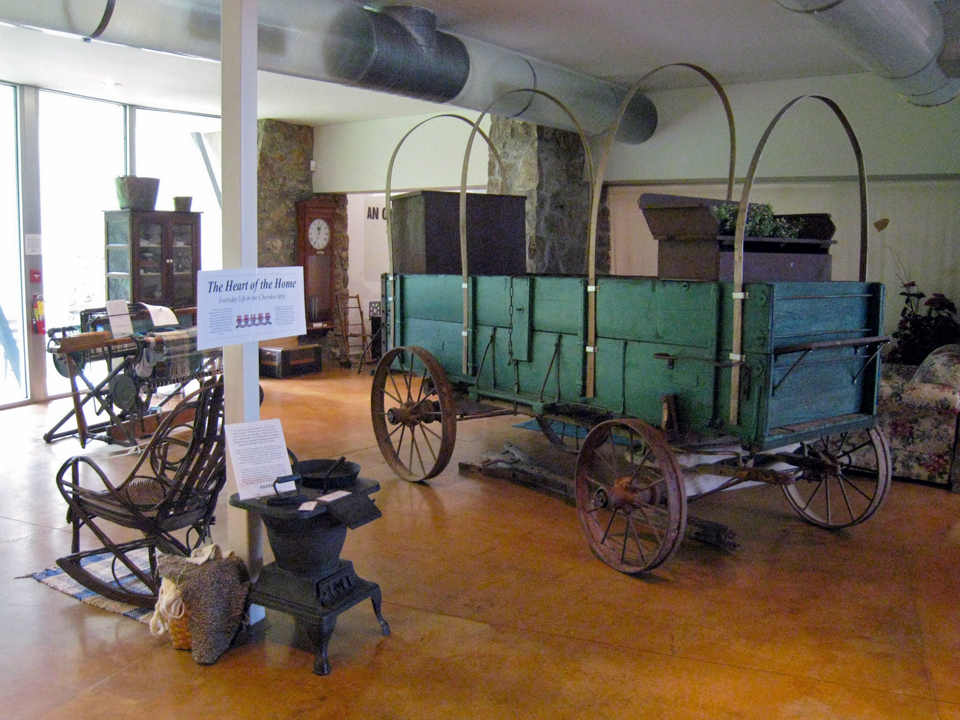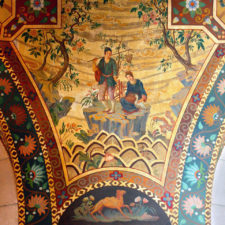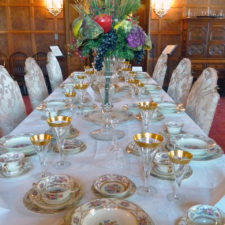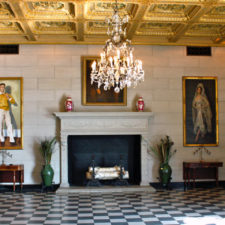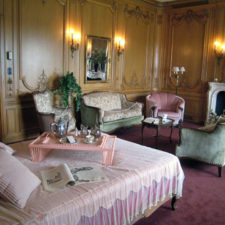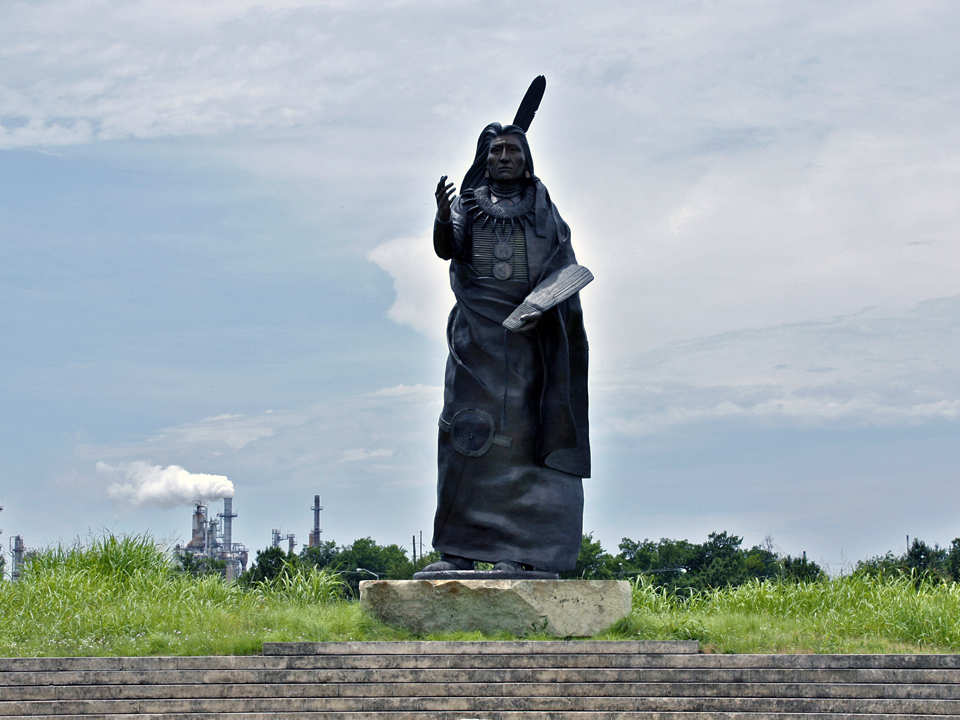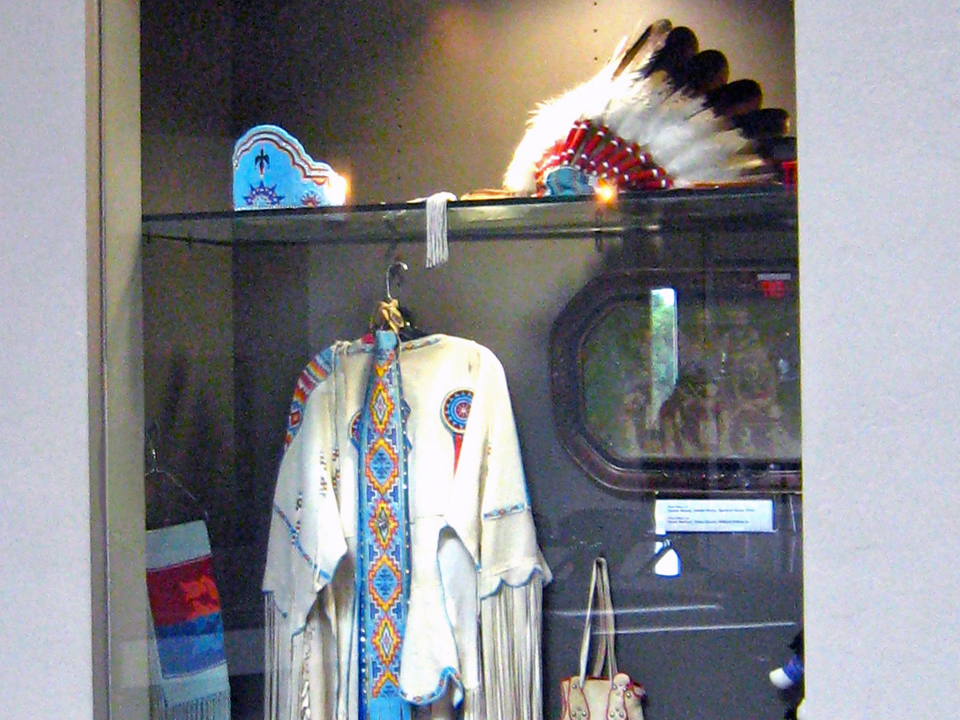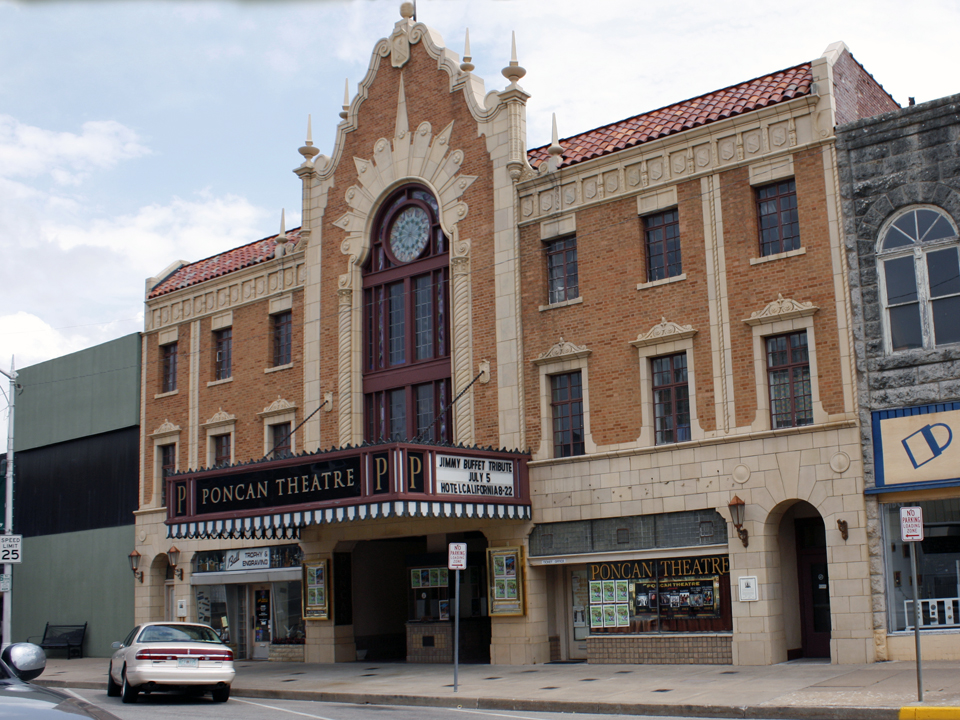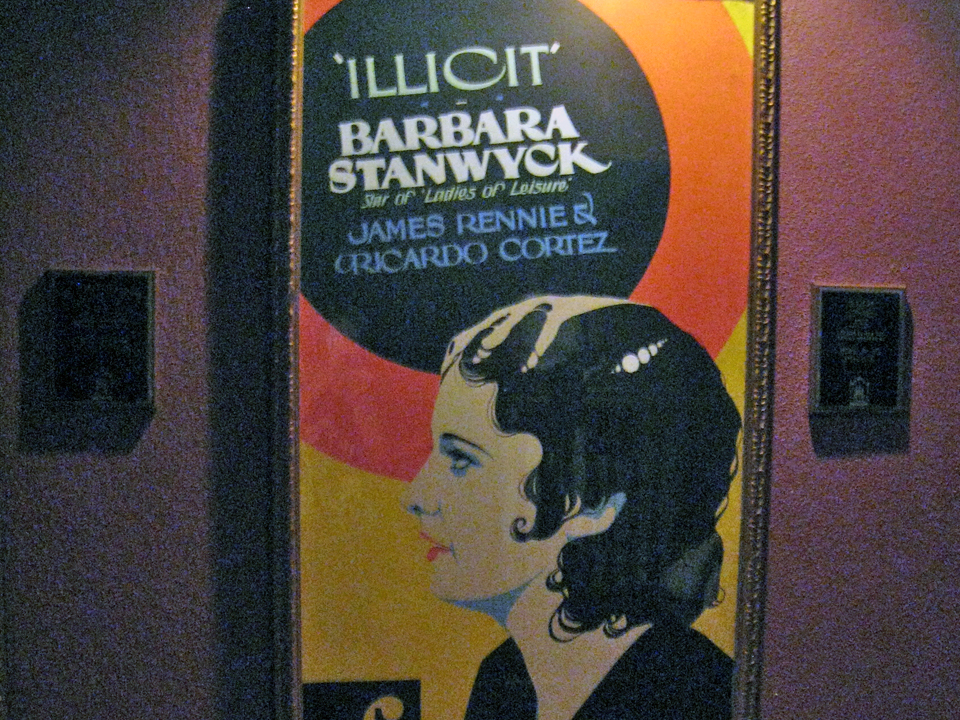Ponca City, Oklahoma: Native Americans, pioneers, and oil
Pioneer Woman Statue, Ponca City, Oklahoma
Ponca City
Ponca City, Oklahoma is a place to learn more about Native American culture, get a new perspective on the pioneer experience, and to see how an oil man lived the American Dream.
The city was founded during Cherokee Strip Run in September 1893. By the early 1900s it was drawing the attention of oilmen like Ernest Whitworth Marland. Marland was a U. S. Congressman, the tenth governor of Oklahoma, and became major city benefactor.
Marland learned the oil business while practicing law in Pennsylvania. He made a fortune in West Virginia and Pennsylvania and lost it in the Panic of 1907. He discovered his first well at the 101 Ranch and stayed to build an empire.
dining room, Marland Mansion, Ponca City, Oklahoma
In 1916 he built his Grand Home, a 16,524 square foot, 22 room mansion with a central vacuum system, an automatic dishwasher, air conditioning, and one of the first indoor swimming pools in Oklahoma. The home, now restored, also houses the Indian Museum’s Native American artifacts and memorabilia from the 101 Ranch.
Pioneer Woman Museum and Statue
In the 1920s, Marland paid twelve top sculptors $10,000 each to design a model for a statue to honor the spirit of the women who settled this part of the country. The models were displayed around the country and 750,000 people voted. Bryant Baker’s model was the clear favorite.
The 17’ statue is the third largest bronze statue in world. It stands one block from Marland Mansion, on land he gave to the people of Oklahoma. Oklahoma humorist Will Rogers spoke at the 1930 unveiling.
Pioneer Woman statue, Ponca City, Oklahoma
The adjacent Pioneer Woman Museum was dedicated in 1958, the 65th Anniversary of the opening of the Cherokee Strip for settlement.
Pioneer Woman Museum, Ponca City, Oklahoma
The Marland Mansion—”The Palace of the Prairie”
In 1925 Marland built a grander mansion, a $5.5 million four level, 55 room, 43,561 square foot Renaissance villa modeled after Davanzati Palace in Florence, Italy. It is on 2500 acres with five lakes, a nine-hole golf course, an artist’s studio, boat houses, stables, polo grounds, a game refuge, kennels, gate houses, a lodge, and a guest house. It was featured on A&E Network as one of America’s Castles.
ceiling detail, Marland Mansion, Ponca City, Oklahoma
dining room, Marland Mansion, Ponca City, Oklahoma
portrait room, Marland Mansion, Ponca City, Oklahoma
bedroom, Marland Mansion, Ponca City, Oklahoma
Marland’s wife, Virginia, died before the mansion was completed. He had his adoption of Lydie, his niece by marriage, annulled. Then he married her.
While Marland honeymooned, his banker, J. P. Morgan, gained control of the company.
By the 1930s the Marlands could not even afford the utility bills for their home and moved to the artist’s studio.
Before he died, Marland sold the mansion to the Carmelite Fathers to be used as a monastery and a convent. In 1975 Continental Oil, formerly Marland Oil and now Conoco Phillips, assisted the city in purchasing the mansion. It is now open to the public.
Centennial Plaza
The Centennial “This Land is Mine” Monument stands on City Hall’s Centennial Plaza, which is made of personalized bricks sold to “stake your claim” in the plaza and the city’s history.
When the statue was unveiled, Native Americans beat drums from the library lawn across the street in protest, making clear the need to increase awareness of the perspectives of Native Americans.
Standing Bear Native American Park and Museum
Finally, community and tribal members met. They decided that a statue at least as large as the Pioneer Woman should be erected as tribute to the struggles, culture, and successes of Native Americans.
In 1996, a 22’ bronze statue of Ponca Chief Standing Bear was unveiled, facing east to the rising sun to symbolize new beginnings.
Standing Bear, Ponca City Prairie Preserve
Standing Bear was an example of the plight of the Native Americans. His daughter and son had died as a result of forced relocation to the “Warm Lands.” He was arrested while carrying his son’s body to be buried with the spirits of his grandfathers, his son’s dying wish.
Major newspapers made the nation aware of Standing Bear’s plight and words:
My hand may not be the same color as yours, but if I pierce it I shall feel pain. If you pierce your hand, you also feel pain. The blood that will flow from mine will be the same color as yours. I am a man. The same God made us both.
The court battle won for all Native Americans the rights of a person under U.S. law, a major turning point for civil rights in America.
The Standing Bear Museum and Education center opened in 2007.
Pawnee Nation Display, Standing Bear Museum, Oklahoma
The annual Standing Bear Pow Wow, which is held the last Friday and Saturday in September, is free and open to the public.
Poncan Theater
The Poncan Theater was built in 1927 as a vaudeville house and silent film theater known as a mood-elevating “atmospheric theater.” This grand show palace featured air conditioning, a twelve person orchestra, Wurlitzer pipe organ, and uniformed usherettes. John Philip Souza Band and Sally Rand, who appeared with just her fans and a transparent balloon were among the performers.
Poncan Theater, Ponca City, Oklahoma
The theater has a rare collection thought to be world’s largest collection of hand painted 1930s lobby art. Popular in the teens 20s, and 30s, these were created locally and usually destroyed after the film ran.
Poncan Theater, Ponca City, Oklahoma
Historic photographs are also on display. The theater has been restored and is used for performances.
History of Oil
Just past the largest Conoco/Philips refinery in the world, the CONOCO History Museum showcases the oil and gas empire from the days of Wildcatters of the Cherokee Outlet. It also features daring folks like the Doodlebuggers who dug a hole, lit dynamite, and ran.
Ready to go?
Blaze your own trail or follow those of Indian chiefs or wagon trains. Let history books and the Old West come alive — in Oklahoma.

